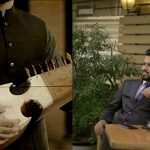May 28th is remembered every year as the Day of Martyrs of Takkar to honour the memories of those lost in the Takkar massacre. The Takkar massacre is a part of a series of attacks and massacres committed by the British Indian Army in order to suppress the voices of those who wanted freedom.
The Takkar massacre happened at the village of Takkar in Mardan, British India (now Pakistan). It was a retaliation from the British troops after one of their officers named Murphy was killed by the local villagers of Takkar.
Background of the incident
According to local historians and elders of the area, on April 23, 1930, a violent incident had taken place in Qissa Khwani Bazaar in Peshawar in which nearly 100 people were killed when the British security forces opened fire on the protesting citizens.
The British colonialists were angry because support for the freedom movement led by Khudai Khidmatgars (also known as the ‘Surkh Posh’ or ‘Red Shirts’.) was growing manifold.
After Peshawar and Utmanzai (Charssadda), Takkar village was the next stronghold of the freedom movement. In an effort to suppress the freedom movement led by the Red Shirts, the British establishment started making arrests in Takkar as well.
On May 26, 1930: A British officer named Murphy arrived in Takkar along with police forces to arrest a number of tribal elders who supported the freedom movement.
Murphy had an arrest warrant for Malik Masam Khan (Father of Dilbar Khan Takkar), Salar Shamroz Khan, Malik Khan Badshah, Pir Shahzada and Malik Hameed – all tribal elders from the village of Takkar.
The Police asked the five men to surrender, to which they agreed after exchanging hot words for some time. The surrender was set to commence the next day in Mardan.
May 27, 1930: The five men set off to Mardan in the form of a procession. However, a clash a clash happened between the men and the British troops mid-way.
Riding on a horse came Officer Murphy making his way into the procession. A moment later, shots were fired and down fell Murphy from his horse. Within a few minutes, Murphy was surrounded by a crowd of Pashtun tribal women who started throwing pitchers full of water on him.
Murphy succumbed to his injuries and died on the spot.
Theories about Officer Murphy’s death
There are three theories about what caused the instant death of Officer Murphy.
Pahlawan Sultan from Dandao village (near Takkar) claimed that he was the one who shot Murphy and that he died already when the women hit him with pitchers.
The second theory suggests that a woman named Swatay Bibi from village Gujar Garhi (near Mardan) killed murphy when she hit him on the head with a pitcher full of water.
Malik Masim Khan, Salar Shamroz Khan and others, however, held a different view. They believed that two brothers namely Amin and Said Amin killed Murphy when he was on a horseback making his way in to the procession.
The day of the Takkar massacre
The death of Officer Murphy enraged the British administration who were already making moves against the tribal Pashtuns for their anti-British government campaigns.
On May 28, 1930, three days after the tribesmen stopped the Police from arresting their elders, the Takkar massacre happened. Angry for revenge, the British soldiers laid siege to Takkar and the local villagers witnessed the brutality of the worst kind.
According to local elders, an elderly man from the village was able to break through the police cordon to bring help. He went to a nearby village and informed them that the British had attacked Takkar. It is said that people from neighbouring villages Waitaki, Saru Shah and Tambalkoo rushed to Takkar to reinforce the villagers.
In an effort to disperse those rushing to Takkar to assist those under siege, the British troops even fired at nearby trees. Some people claim that the British troops also used close air support (airforce) during the massacre.
A large number of people were injured during the Takkar massacre. The British troops didn’t even leave tribal women and children. They were also beaten up and some even molested.
According to a Pashto book titled, ‘Da Khpal Waakaye Tarun’, 70 people were martyred and 150 wounded in the violence unleashed by the British force during the Takkar massacre. Homes and hujras of those leading the Khudai Khidmatgar movement were burnt as well.
Some of those martyred in the Takkar massacre were identified as Juma Syed, Sanobar Kaka, Said Buland Kaka, Zarawar Khan and Baghi Shah.
To honour the memories of those lost in the massacre, a monument is built on the land where the incident happened. There are also several folk songs written in remembrance of the tragedy. “Pa Takkar Jang De,” is a song written in its memory that is still popular among the Pashtun folk. The lyrics of the song perfectly depicts the scene the people of Takkar witnessed on the day of the British offensive.Just a


